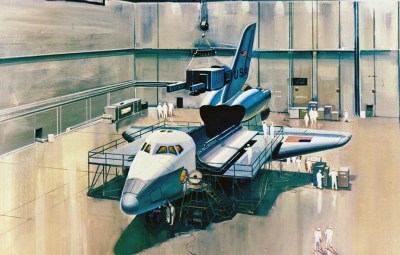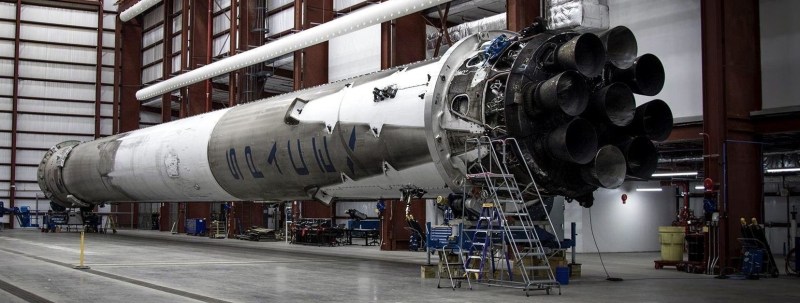Put simply, the goal of any reusable booster is to reduce the cost of getting a payload into space. The comparison is often made to commercial aviation: if you had to throw away the airliner after every flight, nobody could afford the tickets. The fact that the plane can be refueled and flown again and again allows operators to amortize its high upfront cost.
In theory, the same should hold true for orbital rockets. With enough flight experience, you can figure out which parts of the vehicle will need replacement or repair, and how often. Assuming the fuel is cheap enough and the cost of refurbishment doesn’t exceed that of building a new one, eventually the booster will pay for itself. You just need a steady stream of paying customers, which is hardly a challenge given how much we rely on our space infrastructure.
But there’s a catch. For the airliner analogy to really work, whatever inspections and repairs the rocket requires between missions must be done as quickly as possible. The cost savings from reuse aren’t nearly as attractive if you can only fly a few times a year. The key to truly making space accessible isn’t just building a reusable rocket, but attaining rapid reusability.
Which is precisely where SpaceX currently finds themselves. Over the years they’ve mastered landing the Falcon 9’s first stage, and they’ve even proven that the recovered boosters can be safely reused for additional flights. But the refurbishment process is still fairly lengthy. While their latest launch officially broke the record for fastest reflight of a space vehicle that had previously been set by Space Shuttle Atlantis, there’s still a lot of work to be done if SpaceX is ever going to fly their rockets like airplanes.
The Space Truck That Wasn’t
When it was being developed, NASA envisioned the Space Shuttle as a sort of “Space Truck” that could fly weekly missions to low Earth orbit. Scientists and engineers wouldn’t need to wait years before they had to opportunity to fly their payloads, just strap it down in the back of the next scheduled Shuttle flight. The cavernous cargo bay ensured there would always be plenty of room for whoever wanted to come along for the ride. NASA hoped to skip the airliner analogy completely, and compared their reusable spacecraft with over-the-road shipping.

But of course, that never happened. The Space Shuttle was an extremely complex vehicle, arguably the most intricate piece of machinery humanity has ever produced; and it’s been said that even by the end of the 30 year program, engineers were still learning something new about it after each flight. With so many components in the system, it was difficult to predict what kind of repairs each orbiter would need when it got back to Earth, making the refurbishment process between flights far more expensive and time consuming than NASA had anticipated.
In the end, it usually took months to prepare each Shuttle for its next mission. There was an expectation that the time between flights would have been reduced as ground teams gained experience on the vehicle, but in actuality, it was the opposite. The fastest turn around between two flights of the same orbiter was in 1985, between the first and second flights of the newly constructed Atlantis, with 54 days elapsing between missions STS-51-J and STS-61-B.
As the program went on, and especially after the tragic loss of Challenger in 1986, the changing culture of safety at NASA demanded ever more stringent inspections on the nation’s only human-rated spacecraft. Inherent flaws in the winged orbiter were partly to blame, as the chances of crew survival in a number of failure modes were considered unlikely at best. Failure was truly not an option with some of the Shuttle’s systems; either they worked perfectly, or seven astronauts would almost certainly die. So they took their time.
Back to Basics
Despite being one of the most modern rockets in the world, the Falcon 9 is a very simple design compared to the Space Shuttle. There’s no winged orbiter, no solid-propellant boosters. While it does have nine engines on the first stage, they’re much smaller and less complex than the three colossal RS-25 engines used on the Shuttle. The Falcon 9, with the exception of the hardware added to facilitate its propulsive landings, could be thought of as a return to “classic” rocket designs of the Space Age but with the benefit of modern construction techniques.
Still, the roughly nine-minute suborbital trip to space and back that the first stage of the Falcon 9 makes is no pleasure cruise. Even which such a comparatively simple booster, it takes a lot of work to ensure it’s ready for another flight. While SpaceX has been unusually tight-lipped about how much money and effort goes into returning a previously launched first stage to flight, we do know that on average it takes them months to complete the work.

That being said, the pace is certainly picking up. It took just shy of a year to examine, refurbish, and validate the first reused booster back in in 2017. In comparison, the Falcon 9 that recently launched South Korea’s ANASIS-II satellite into orbit was the same rocket that returned the United States to human spaceflight just 51 days prior. After holding the record for 35 years, the Space Shuttle has officially lost the title as the most rapidly reusable space vehicle in history.
Lofty Goals
The Falcon 9 might have beaten the Space Shuttle at its own game, but SpaceX still has to pick up the pace considerably if they’re ever going to meet Elon Musk’s stated 2019 goal of relaunching a first stage booster within 24 hours of landing.
We intend to demonstrate two orbital launches of the same Falcon 9 vehicle within 24 hours no later than next year. That will be, I think, truly remarkable to launch the same orbit-class rocket twice in one day.
We’re now halfway through 2020, and SpaceX is still nowhere near that sort of launch cadence. The next manifested launch of a reused Falcon 9 might actually break the 51 day record they just set, but only by a few days. Just as NASA underestimated the difficulty in flying weekly Space Shuttle missions, it’s entirely possible, perhaps even probable, that SpaceX will never hit their goal of launching twice in 24 hours. The argument could even be made that there’s not sufficient industry demand for daily flights to low Earth orbit.

But that doesn’t mean there isn’t room left for improvement. Within just a few weeks of the first successful landing of a Falcon 9 in 2015, SpaceX made a thorough examination of the flown booster, returned it back to the launch pad, and fired up all nine engines to test their performance.
There was no attempt to actually launch the booster, but that was never the point. Before pinning the future of the company on the concept of reusability, they wanted to answer a simple question: was it actually possible to refuel and reignite a rocket that had just returned from putting a payload into orbit.
Clearly, they were happy with the results of that test. It was an important step towards proving the Falcon 9 could be reused safely, and lay the groundwork for the post-landing examination and refurbishment process that SpaceX is still refining. The challenge now is streamlining the process so they can get the turnaround time as low as it was on that first attempt. It would mean once again succeeding where NASA failed, but SpaceX seems to be getting pretty good at that these days.
No comments:
Post a Comment